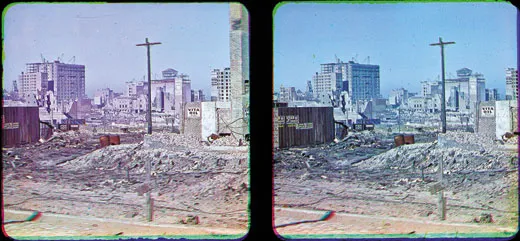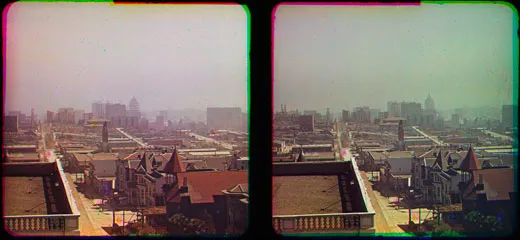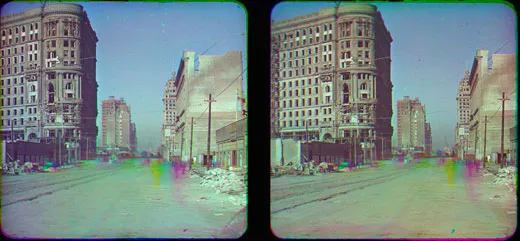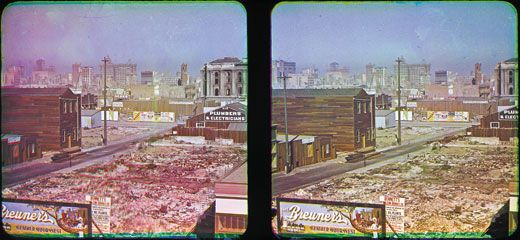The 1906 San Francisco Quake in Color
Recently discovered photographs depict the aftermath of the devastating California earthquake in a new light
Many photographers documented the 1906 San Francisco earthquake and its aftermath. Yet more than a century would pass before the public would see a view of the disaster in three-dimensional color. Recently discovered by the National Museum of American History, the seven previously unpublished images were taken by Frederick Eugene Ives (1856-1937), an inventor and photographer, several months after the earthquake and a year before color photography became commercially available in 1907. Ives’ photochromoscopy system used stereo glass plates that would register in color when seen through a viewer. “These are possibly the only color photographs of the earthquake and perhaps the first color photos of San Francisco,” says Shannon Perich, the curator of the museum’s photographic history collection.
Although Ives patented his 3-D color method, he never successfully marketed it. His photographs of San Francisco would end up buried among a larger collection of his work in the history collection in Washington, D.C. until Anthony Brooks, who has been volunteering at the museum for five years, stumbled upon them. “I knew there was color photography 100 years ago,” says Brooks. “But seeing the early 20th century in full color, as people would have seen it then, was a shock and a pleasant surprise.”
/https://tf-cmsv2-smithsonianmag-media.s3.amazonaws.com/accounts/headshot/Arcynta-Ali-240.jpg)




/https://tf-cmsv2-smithsonianmag-media.s3.amazonaws.com/accounts/headshot/Arcynta-Ali-240.jpg)